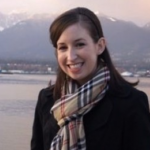Advances in the Young Adult Cancer Movement: Why SAYAO Is a Big Deal (Part 2 of 3)
March 11, 2014
By: Emily Drake
In October of 2013, I had the opportunity to attend the first annual meeting of the Society of Adolescent and Young Adult Oncology (SAYAO) held in Irvine, California at the University of California, Irvine (UC Irvine), in partnership with the Hyundai Cancer Institute at the Children’s Hospital of Orange County (CHOC Children’s). SAYAO was envisioned and developed under the leadership of Dr. Leonard Sender, a pediatric and adult Hematologist/Oncologist and one of the pioneer physician advocates in the adolescent and young adult (AYA) cancer movement. Dr. Sender is the Medical Director of the Hyundai Cancer Institute at CHOC Children’s; Pediatric Subspecialty Faculty Division Chief of Oncology; and Director of Clinical Operations and Program Development at the UC Irvine Health’s Chao Family Comprehensive Cancer Center. The society is part of an initiative that Dr. Sender undertook to engage health professionals in the AYA cancer movement.
Dr. Sender first led the creation of an academic journal designed to fill an imminent need for multidisciplinary health research specifically involving adolescent and young adult oncology issues, which was named theJournal of Adolescent and Young Adult Oncology (JAYAO). JAYAO was launched in 2011 and it is currently under the editorial leadership of Dr. Sender. Dr. Sender also created a society to bring these health professionals together, the Society of Adolescent and Young Adult Oncology (SAYAO). SAYAO “is an international professional organization dedicated to improving adolescent and young adult cancer care through the promotion of interdisciplinary research, education, communication, and collaboration among health professionals” (www.sayao.org). The society believes that patients who are between the ages of 15 and 39 (AYAs) represent a unique patient population within oncology practice. The society states that: “pediatric and adult oncology research and clinical agendas are not designed to focus on the unique biological, clinical, psychosocial, and survivorship issues of this age group. Therefore, significant advances in adolescent and young adult cancer (AYA) care can be best achieved through an AYA specific focus. The annual meeting was launched as an initiative under this endeavor.
The AYA cancer patient advocate movement has gained tremendous momentum in the last few years. However, it is imperative that health professionals become invested and educated on the needs of this unique group of patients in order for their health-related needs to be met. Physicians and other invested health professionals need to be educated on issues specific to this population, regardless of their sub-specialty. In addition, they need to know how AYA cancer advocates can support them to achieve these goals. The intention of the SAYAO conference was to create an academic space where health professionals and researchers could educate each other on relevant issues related to AYA oncology. The attendees hailed from a variety of backgrounds, including physicians, lawyers, health promotion specialists, nurses and psychologists. Also in attendance were residents and medical students, a professional group that certainly needs to be included if we hope for the needs of this population to be addressed by the future generation of physicians. The annual meeting also served as a means to connect individuals and encourage multidisciplinary collaboration between scientists and countries on future research projects. The latest information on fertility issues and preservation were discussed. This year, four cancer types, each occurring at high frequency in AYAs, were presented (breast cancer, leukemia, cervical cancer and melanoma) and the information provided highlighted emerging knowledge from each working group. Different sides of current debates in the field were highlighted to generate academic discussion and next year it is expected that another four types of cancer will be discussed.
The creation of this annual meeting is a big deal for the AYA oncology community. It is about getting health professionals to talk to other health professionals about the unique issues adolescent and young adult cancer patients encounter. It is taking the conversation of why this population is unique to the next level by 1) sharing and collaborating on new and novel ways healthcare professionals can address the needs of AYA patients; 2) discussing steps that still need to be made to ensure that the survival rates of this population start increasing; and 3) determining best practices to ensure that the needs of these patients get met. The conference built excitement for professionals from both the research and practice realms such that people were engaged in the discussion and professionals from a variety of fields were given the platform to educate each other.
The meeting highlighted what providers need to know when working with this population, including unique legal issues, which were presented by Monica Bryant, a Cancer Rights Attorney. Stupid Cancer (www.stupidcancer.org) Co-Founders Matthew Zachary (CEO) and Kenny Kane (EVP, Mission) gave a powerful presentation about the AYA cancer advocacy movement and how far it has come in the past decade. They highlighted how advocacy groups can help health professions gain insight and information on how to address these patients’ specific needs. Additionally, they presented Instapeer (www.instapeer.org), a new mobile app that they are developing to help decrease the sense of isolation that AYA patients often experience. The app will facilitate 1-on-1 peer connections via mobile connection. This is a modern and novel way to deliver social support.
https://www.youtube.com/watch?v=vkkD65b8hR0
There were also a number of other new innovative models for addressing these patients’ needs that were shared at the conference. These will be highlighted in part three of this three-part series.
This blog was originally published in the Huffington Post’s (US) Healthy Living: Generation Why section. See more of Emily’s posts here: https://www.huffingtonpost.com/emily-drake/ and follow her on Twitter @EK_Drake




